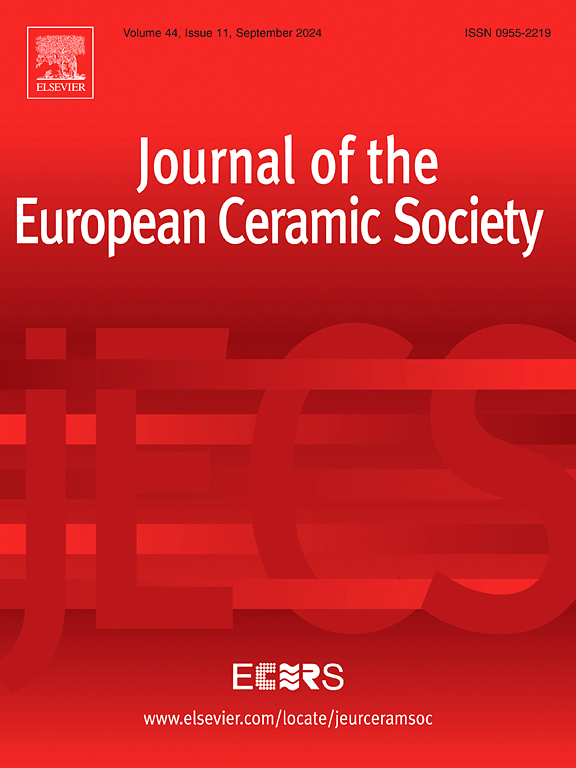Boosting the CO2 permeability in a supported molten-carbonate membrane by tuning the ratio between the ionic and electronic conducting phases
IF 5.8
2区 材料科学
Q1 MATERIALS SCIENCE, CERAMICS
Journal of The European Ceramic Society
Pub Date : 2025-05-08
DOI:10.1016/j.jeurceramsoc.2025.117522
引用次数: 0
Abstract
High-temperature supported molten-carbonate membranes hold significant promise for selective CO2 capture and utilization from fossil fuel combustion owing to their structural simplicity and cost-competitive operation as opposed to traditional solvent processes. High CO2 capture rates, that can be quantitatively represented by the membrane’s permeability, are routinely expected to be dictated by the CO2 driving force or the composition of the molten phase. Here, however, we demonstrate that in a supported molten-salt membrane fabricated using mixed ionic and electronic conducting oxides as the membrane material, the phase ratio between those phases can also control CO2 permeability. We demonstrate this by using different ratios of Al-CeO2 (ionic phase) and Al-ZnO (electronic phase) for the membrane material and operate under fixed CO2 partial pressure driving force to show that higher ionic:electronic phase ratios lead to higher CO2 permeabilities.
通过调整离子和电子导电相之间的比例,提高二氧化碳在支撑熔融碳酸盐膜中的渗透率
与传统的溶剂工艺相比,高温支持的熔融碳酸盐膜结构简单,操作成本低廉,因此在化石燃料燃烧中选择性捕获和利用二氧化碳方面具有重要的前景。高CO2捕获率,可以通过膜的渗透性定量表示,通常被认为是由CO2驱动力或熔融相的组成决定的。然而,在这里,我们证明了在用混合离子和电子导电氧化物作为膜材料制成的支撑熔盐膜中,这些相之间的相比也可以控制CO2的渗透率。我们通过使用不同比例的Al-CeO2(离子相)和Al-ZnO(电子相)作为膜材料,并在固定的CO2分压驱动力下操作来证明这一点,表明更高的离子:电子相比导致更高的CO2渗透率。
本文章由计算机程序翻译,如有差异,请以英文原文为准。
求助全文
约1分钟内获得全文
求助全文
来源期刊

Journal of The European Ceramic Society
工程技术-材料科学:硅酸盐
CiteScore
10.70
自引率
12.30%
发文量
863
审稿时长
35 days
期刊介绍:
The Journal of the European Ceramic Society publishes the results of original research and reviews relating to ceramic materials. Papers of either an experimental or theoretical character will be welcomed on a fully international basis. The emphasis is on novel generic science concerning the relationships between processing, microstructure and properties of polycrystalline ceramics consolidated at high temperature. Papers may relate to any of the conventional categories of ceramic: structural, functional, traditional or composite. The central objective is to sustain a high standard of research quality by means of appropriate reviewing procedures.
 求助内容:
求助内容: 应助结果提醒方式:
应助结果提醒方式:


